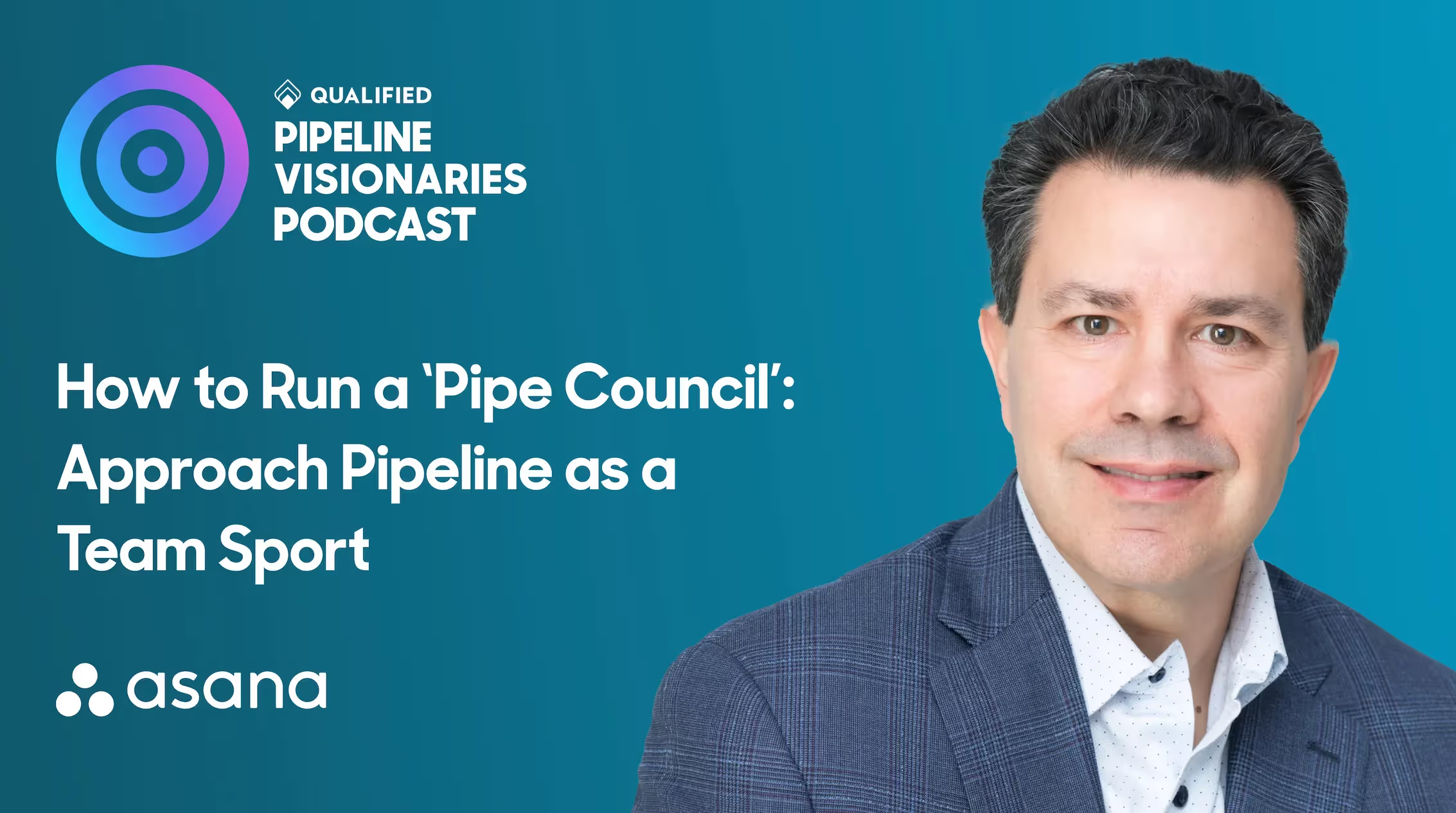How to Run a ‘Pipe Council’: Approach Pipeline as a Team Sport
Ed McDonnell, CRO at Asana, helps us understand why pipeline generation is a team sport.




Ed McDonnell, CRO at Asana, helps us understand why pipeline generation is a team sport.

This episode features an interview with Ed McDonnell, CRO at Asana, a software company that helps teams orchestrate their work, from small projects to strategic initiatives.
In this episode, Ed shares with us Asana’s vision for tackling work automation, insight into their Work Innovation Lab, and why attribution for attribution's sake is meaningless. Ed also talks about the importance of treating pipeline like a team sport and how to effectively run a “Pipe Council”.
Key Takeaways:
Stay up to date with weekly drops of fresh B2B marketing and sales content.
Ed McDonnell, CRO at Asana, helps us understand why pipeline generation is a team sport.


This episode features an interview with Ed McDonnell, CRO at Asana, a software company that helps teams orchestrate their work, from small projects to strategic initiatives.
In this episode, Ed shares with us Asana’s vision for tackling work automation, insight into their Work Innovation Lab, and why attribution for attribution's sake is meaningless. Ed also talks about the importance of treating pipeline like a team sport and how to effectively run a “Pipe Council”.
Key Takeaways:
Stay up to date with weekly drops of fresh B2B marketing and sales content.
Ed McDonnell, CRO at Asana, helps us understand why pipeline generation is a team sport.


This episode features an interview with Ed McDonnell, CRO at Asana, a software company that helps teams orchestrate their work, from small projects to strategic initiatives.
In this episode, Ed shares with us Asana’s vision for tackling work automation, insight into their Work Innovation Lab, and why attribution for attribution's sake is meaningless. Ed also talks about the importance of treating pipeline like a team sport and how to effectively run a “Pipe Council”.
Key Takeaways:
Stay up to date with weekly drops of fresh B2B marketing and sales content.
Ed McDonnell, CRO at Asana, helps us understand why pipeline generation is a team sport.



This episode features an interview with Ed McDonnell, CRO at Asana, a software company that helps teams orchestrate their work, from small projects to strategic initiatives.
In this episode, Ed shares with us Asana’s vision for tackling work automation, insight into their Work Innovation Lab, and why attribution for attribution's sake is meaningless. Ed also talks about the importance of treating pipeline like a team sport and how to effectively run a “Pipe Council”.
Key Takeaways:
Discover how we can help you convert more prospects into pipeline–right from your website.